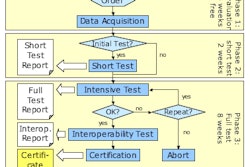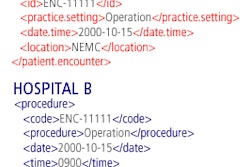Dear Healthcare IT Insider,
The 2007 Healthcare Information Management Systems Society (HIMSS) conference provided a stage in New Orleans for government, clinical, and industry representatives from around the world to exchange ideas and information on the latest developments in healthcare information technology (HIT).
Set against the backdrop of one of the largest infrastructure failures in recent U.S. history, educational sessions on disaster recovery, health record portability, and patient data privacy and security took on a sense of urgency and immediacy in a region still struggling to recover from the devastation of Hurricane Katrina.
In a keynote address the morning of the final day of the conference, U.S. Department of Health and Human Services Secretary Michael Leavitt observed that the growth in costs for providing healthcare is rapidly becoming unsustainable.
"When I was born, healthcare in this country represented about 4% of the total economy," he said. "When my daughter was born 25 years later, healthcare had doubled; and occupied 8% of the total economy. This year, a generation later, as my grandchild was born, it has doubled again to16% of the gross domestic product. By the time my granddaughter is the one holding a new baby, unless something changes, healthcare will be 25% of the GDP of this country."
A country cannot afford to spend one-quarter of its gross earnings on healthcare, Leavitt said, so the present healthcare system must be reformed. An integral part of his vision of a reformed system is the adoption of electronic health record (EHR) systems.
However, these EHR products must meet interoperability standards or they are doomed to fail. Leavitt urged physicians to purchase systems that meet the certification requirements of the Certification Commission for Health Information Technology (CCHIT).
Thousands of miles away, Australia has been quietly laying the groundwork in its efforts to implement a national EHR system. According to Dr. Ian Reinecke, chief executive officer of the National E-Health Transition Authority (NEHTA), foundations of common standards, identity services, and terminologies remove investment road blocks and increase opportunities for health IT.
Reinecke presented a road map at HIMSS for the development of an Australian EHR system built around existing clinical and IT standards that may accelerate its adoption in the land down under.
To learn more about how Australia is using standards as the foundation of its e-health initiative, click here. As a Healthcare IT Insider subscriber, you have access to this story before it's published for the rest of our AuntMinnie.com members at the end of the week.
Finally, if you have a comment or story to share about any aspects of healthcare IT, please get in touch with me at [email protected]. I look forward to hearing from you.



















